With the increasing concern for environmental protection and climate change response, green manufacturing is becoming an essential element in the development strategies of global businesses. The year 2025 promises to witness significant advancements in the application of technology to green manufacturing, helping to reduce resource waste, lower emissions, and enhance production efficiency. From artificial intelligence (AI), the Internet of Things (IoT) to renewable energy and blockchain, these technologies not only improve efficiency but also promote sustainability in the industry.
This article will explore the technological trends that will shape the future of green manufacturing in 2025 and beyond.
1. What is green production? The importance of green production in 2025
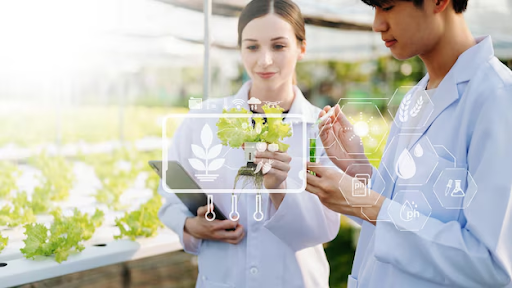
Green production is a method of production that focuses on the efficient use of resources, waste reduction, energy savings, and minimizing negative impacts on the environment. The goal of green manufacturing is not only to optimize production processes for economic efficiency but also to protect and maintain the sustainability of ecosystems and natural resources. This includes the application of advanced technologies, the use of recycled materials, the reduction of CO2 emissions, and the optimization of processes to minimize waste and environmental impact. Green manufacturing is not only an environmental responsibility but also a business strategy that helps companies enhance competitiveness, save costs, and improve brand image.
The importance of green manufacturing in 2025:
- Responding to climate change: In the context of increasingly severe climate change, green production plays a crucial role in reducing greenhouse gas emissions, especially CO2. The increase in global temperatures and extreme weather events have significantly impacted production and daily life. Therefore, green production helps mitigate this impact by reducing emissions and using renewable energy.
- Sustainable growth: By 2025, the demand for sustainable products and services will continue to increase. Consumers and businesses will increasingly focus on products that are not only good for health but also environmentally friendly. The adoption of green production helps companies meet this demand and increase brand value, thereby creating a competitive advantage in the global market.
- Cost savings and process optimization: Although the initial investment in technology and green production processes may be high, in the long run, businesses will save on energy and raw material costs and reduce waste. This helps optimize the production process and enhance business efficiency, while also reducing costs related to waste management and environmental pollution.
- Strengthening compliance with environmental regulations and policies: Governments and international organizations are increasingly implementing stringent regulations on environmental protection and sustainable development. Therefore, green production is not only a good choice for businesses but also an important factor in ensuring compliance with environmental regulations, helping to avoid penalties and enhancing sustainable operational capacity.
- Attracting investors and financial resources: With the development of sustainable investment markets and investment funds focusing on companies with green development strategies, green production has become an important factor helping businesses attract investors, especially those interested in environmental, social, and governance (ESG) factors.
2. Advanced technologies promote green production
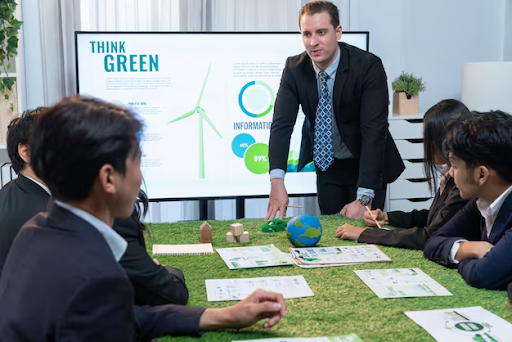
To achieve the goal of green production, advanced technologies play an extremely important role in optimizing the production process, minimizing environmental impact, and conserving resources. Here are some outstanding technologies that help promote green production:
Internet of Things (IoT) – Internet of Things
IoT is a technology that helps connect devices and systems through the internet, collecting and analyzing real-time data to optimize production processes. In green manufacturing, IoT can:
- Energy monitoring and management: IoT helps track the energy consumption of devices and machinery during the production process, thereby implementing energy-saving measures.
- Process optimization: IoT sensors can monitor and adjust the production process in real-time, helping to reduce material and energy waste.
- Waste reduction: Through continuous monitoring, IoT helps detect and eliminate issues such as machinery malfunctions, thereby minimizing waste in production.
Artificial Intelligence (AI) and Machine Learning
AI and Machine Learning have the ability to analyze large amounts of data and make accurate predictions. These technologies can:
- Demand forecasting and supply chain optimization: AI helps predict product demand, enabling businesses to plan production more accurately, thereby avoiding resource waste and reducing excess.
- Optimizing the production process: AI can analyze data from sensors in the production line to optimize performance and reduce waste. Minimizing risks: AI models can help detect issues early in the production process, thereby reducing risks and maintenance costs.
3D printing technology (Additive Manufacturing)
3D printing technology (also known as Additive Manufacturing) is a production method where materials are gradually added instead of being cut away as in traditional methods. This technology helps:
- Reducing material waste: 3D printing uses only the exact amount of material needed, helping to minimize waste and save resources.
- Enhancing recyclability: 3D-printed products can easily be recycled or the materials reused, thereby reducing waste.
- Custom manufacturing: This technology helps produce customized products according to demand, minimizing overproduction and inventory.
Blockchain in the supply chain
Blockchain is a technology that records data in a decentralized and transparent manner, helping to track and verify the origin of materials and products in the supply chain. This can help:
- Ensuring sustainability: Blockchain helps businesses trace the origin of raw materials, ensuring that they are sourced or produced sustainably and environmentally friendly.
- Supply chain optimization: With blockchain, stakeholders can access supply chain information transparently and easily, thereby optimizing processes and minimizing waste in production.
- Preventing fraud and the consumption of illegal resources: Blockchain helps ensure that the materials used in production are not illegally mined or harmful to the environment.
Renewable energy
Using renewable energy sources such as solar, wind, hydro, or biomass energy is an important way to mitigate the negative impact of production on the environment. Technologies related to renewable energy can:
- Reducing greenhouse gas emissions: Renewable energy helps reduce dependence on fossil fuel sources, thereby reducing CO2 and greenhouse gas emissions.
- Creating clean energy: Businesses can use renewable energy to supply electricity to production lines, reducing negative impacts on the environment.
- Optimizing energy efficiency: Energy storage technology and smart energy management systems help optimize the use of renewable energy in production.
Waste treatment and recycling technology
Waste treatment and recycling technologies are becoming increasingly important in green manufacturing. These technologies include:
- Smart waste management: Using new technologies such as microorganisms, enzymes, or automated waste treatment systems helps recycle waste products, turning them into reusable materials in production.
- Water recycling: Water recycling systems help save water resources in production, reduce waste, and improve water use efficiency.
New materials technology
Green materials and sustainable materials are an important part of green manufacturing. These materials include:
- Recycled materials: Using recycled materials in production helps reduce waste and the demand for raw materials.
- Biomaterials: Biomaterials such as biodegradable plastics and plant-based materials can replace traditional plastics, reducing negative environmental impacts.
- Energy-saving materials: New materials such as efficient insulation help save energy in production and in final products.
ERP - maximizing the efficiency of manufacturing enterprise management
In 2025, the application of technology in green production will become a dominant trend in the industry, not only helping to reduce environmental impact but also enhancing production efficiency. Especially, the integration of ERP (Enterprise Resource Planning) technology will play an important role in this transformation, helping businesses manage and optimize resources sustainably.
ERP technology is not just simple business management software but also a platform that connects production, supply, finance, and human resources processes. When applied to green manufacturing, ERP helps companies monitor and minimize waste of materials, energy, and reduce carbon emissions throughout the supply chain. Features such as smart inventory management, precise production planning, and energy efficiency monitoring can help businesses optimize processes and save costs while protecting the environment.
Especially, in the context of increasing consumer demand for green and sustainable products, ERP also supports companies in reporting and ensuring compliance with environmental standards and international regulations. Businesses can use ERP to monitor and report on environmental indicators such as CO2 emissions, energy consumption, and recycling processes, thereby enhancing brand reputation and increasing competitiveness in the global market.
With the continuous development of technology, the application of ERP in green manufacturing is not only a trend but also a key factor for businesses to achieve sustainable development in the future, creating high-quality, environmentally friendly products that meet the stringent demands of the global market.
3. The benefits of applying technology to green production
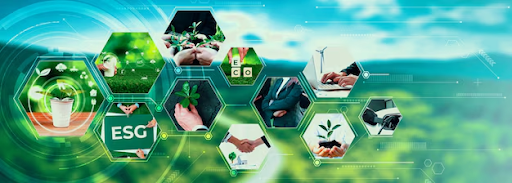
The application of technology in green production brings many clear benefits not only to businesses but also to the community and the environment. Advanced technologies help optimize the production process, minimize environmental impact, and increase economic efficiency. Here are the outstanding benefits of applying technology to green production:
Cost savings and performance optimization
Reducing energy costs: Technologies such as IoT, AI, and renewable energy help businesses monitor and optimize energy usage in the production process. This helps significantly reduce energy costs, especially when businesses transition from fossil fuels to renewable energy (such as solar and wind energy).
Reducing material waste: Technologies like 3D printing and AI help produce more accurately, reducing excess materials and waste. This not only saves costs but also minimizes the exploitation of natural resources.
Process optimization: The application of new technologies helps optimize production processes, thereby reducing waiting times, increasing work efficiency, and eliminating unnecessary steps.
Improve production efficiency and productivity
Enhancing automated production: Automation technologies, such as robots and AI, help boost production efficiency. Production processes can operate continuously, minimizing downtime while enhancing accuracy and reducing human errors.
Smart resource management: Using IoT and AI technology to monitor and analyze data in real-time, thereby making quick decisions to optimize resource use, such as energy, raw materials, and water.
Product quality is improved: Technology can help control product quality more accurately through sensors and automated monitoring systems, reducing product defect rates and increasing customer satisfaction.
Minimize negative impacts on the environment
Reducing CO2 emissions and pollution: Renewable energy technologies (solar, wind) help reduce dependence on fossil fuels, thereby decreasing the amount of greenhouse gases emitted into the environment. Waste treatment and recycling technologies also contribute to reducing pollution, helping to protect the living environment.
Reduce waste and recycle materials: Technologies such as 3D printing and recycling technology help optimize material usage, minimizing waste during the production process. Products can be recycled or reused to reduce the burden of waste on the environment.
Sustainable resource management: Technologies that help monitor and manage resource usage, from monitoring water consumption to verifying the origin and sustainable operation processes of materials in the supply chain.
Enhancing compliance with environmental regulations and policies
Ensure compliance with international standards and regulations: The application of green manufacturing technologies helps businesses comply with increasingly stringent environmental protection regulations, from international standards such as ISO 14001 on environmental management to local regulations on CO2 emissions, waste, and resource use.
Transparency and traceability: Blockchain technology and monitoring systems help track and record the production process from raw materials to the final product. This not only ensures transparency but also helps prove that the business is practicing sustainable production and not violating environmental protection regulations.
Enhancing brand value and attracting customers
Attracting consumers who love green products: Consumers are increasingly concerned about sustainability and environmentally friendly products. The application of green production technology helps businesses create green products, meeting customer demand for sustainability, thereby enhancing brand value.
Enhancing trust and reputation: Green production technologies help businesses build a reputable image, attracting customers and business partners who are concerned about environmental issues and sustainable development.
Accessing new markets: Certifications for green products and sustainable production processes help businesses reach markets that demand environmentally friendly products, thereby expanding business opportunities.
Enhancing innovation and competitiveness
Innovative capability: Green manufacturing technologies drive innovation in products and production processes. Creativity in finding new methods to minimize environmental impact will help businesses maintain their competitiveness in the market.
Sustainable competition: Businesses that adopt green production technology will have a significant competitive advantage as more and more customers and partners demand sustainable and environmentally responsible products.
Support for attracting sustainable investment
Accessing green investment funds: Many investment funds nowadays focus on companies implementing sustainable development strategies. The application of green technology helps businesses attract investors.
Creating long-term value: Businesses that adopt green production not only focus on short-term profits but also create sustainable value in the long run, attracting the interest of future investors.
4. Challenges when applying technology to green production
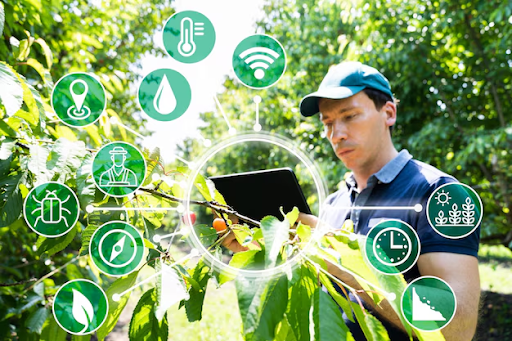
Although the application of technology in green production brings many outstanding benefits, there are also numerous challenges that businesses must face:
Initial investment cost
One of the biggest challenges when applying technology to green production is the initial investment cost. Although green technologies can help businesses save costs in the long term, the initial implementation costs can be a significant barrier, especially for small and medium-sized enterprises (SMEs). Factors such as the cost of acquiring new technology, employee training costs, or the cost of replacing old systems can burden businesses with financial strain. To overcome this issue, businesses need to have a reasonable investment strategy, carefully consider choosing technologies that align with their financial capabilities, and have a clear implementation roadmap to optimize costs.
Training and changing corporate culture
Training employees and changing corporate culture are crucial factors in the process of applying new technology to green production. Advanced technologies require workers to have new skills and knowledge, which means that businesses need to invest in specialized training programs to enhance the capabilities of their workforce. In addition, one of the major challenges is changing the mindset and work habits within the organization. The transition from a traditional production process to more sustainable production methods requires the company to build a flexible and open culture towards change. This can be difficult when facing resistance from some employees or departments who do not want to change their long-standing work habits.
Competition in the industry
In the fiercely competitive environment of today's industries, businesses not only have to face challenges in adopting green technology but also maintain competitiveness against their rivals. Large companies with abundant resources can easily invest in advanced technologies and implement them quickly. Conversely, small and medium-sized enterprises may struggle to keep up with the pace of change and compete with larger industry rivals. Maintaining competitiveness in a globalized market requires businesses to continuously innovate, improve product quality, and ensure that green technologies not only help protect the environment but also add value to their products and services.
The inconsistency in regulations and standards
Although green technologies bring clear benefits, the lack of uniformity in environmental regulations and standards across different regions is also a significant challenge. Businesses operating in multiple countries may face difficulties in complying with different regulations on environmental protection and sustainable development. This can lead to the need to adjust production processes to meet the requirements of each market, which both increases costs and the time required to implement new technologies.
Risks and feasibility of new technology
Some new technologies that have not been widely tested in manufacturing industries may encounter risks related to feasibility and long-term effectiveness. Green technologies, especially new ones like renewable energy technology or blockchain, may face challenges related to performance, stability, or maintenance costs. Businesses need to conduct thorough research and testing before making significant investments in these technologies to ensure that they truly provide long-term benefits and do not increase risks to production operations.
The ability to adapt to changing market demands
The market and consumer demand can change rapidly, and businesses must continuously adapt to meet these changes. When applying technology to green production, businesses need to evaluate and adjust their development strategies to timely meet sustainable consumer demands and new trends. This requires businesses not only to invest in technology but also to have the ability to forecast and quickly adapt to market changes.
5. Predictions about technology development trends in green manufacturing
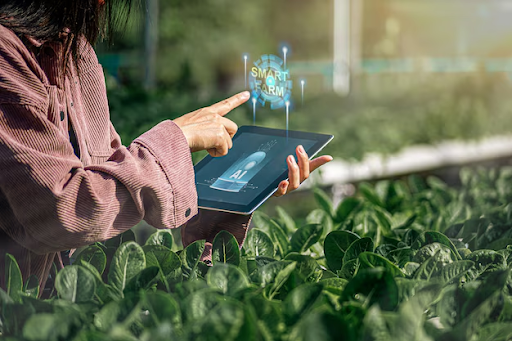
In the context of climate change and the depletion of natural resources, green production has become an inevitable trend to ensure sustainable development. To achieve this goal, advanced technologies play a crucial role in optimizing production processes, minimizing waste, and protecting the environment. In the coming years, the development of technologies such as AI, IoT, renewable energy, and blockchain promises to revolutionize the manufacturing industry, helping businesses not only grow but also contribute to the protection of the planet.
- AI and Machine Learning: AI will optimize the production process, minimize waste, and save energy by analyzing and predicting demand in real-time.
- Internet of Things (IoT): IoT devices will monitor and optimize the use of resources such as energy, water, and raw materials, helping to reduce waste and improve production efficiency.
- Renewable energy and energy storage: The use of renewable energy (solar, wind) will increase, combined with efficient energy storage technology to ensure a stable and sustainable energy supply.
- Blockchain: Blockchain will help enhance transparency and track the sustainable sourcing of materials in the supply chain, reducing negative environmental impacts.
- In 3D and on-demand production: 3D printing technology will help reduce waste and optimize material usage in manufacturing.
- Recycling and waste treatment technology: Advanced recycling technologies will help minimize waste and reuse materials in the production process.
- Precision agriculture: Precision agriculture technology (IoT, drones, AI) will optimize resource use in agriculture, helping to reduce pollution and increase productivity.
6. Conclusion
Applying technology to green manufacturing by 2025 will not only be a trend but a key factor in achieving sustainable development. Advanced technologies such as AI, IoT, renewable energy, and blockchain are opening up new opportunities to optimize production processes, minimize negative environmental impacts, and save resources. However, to fully harness the potential of these technologies, businesses need to invest in research, development, and innovation, while closely collaborating with government agencies and international organizations. The application of technology in green production will not only enhance production efficiency but also create a green and sustainable future for the next generation. Contact us for consultation and to receive free materials on the latest technology trends.